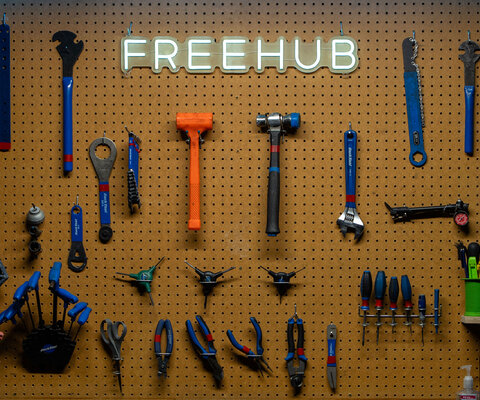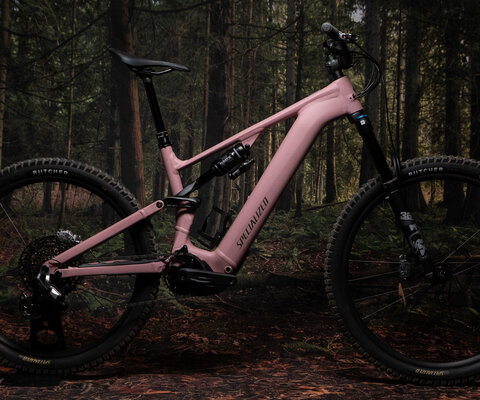Cold Snap Racing in the Dead of Yellowstone Winter
Words by Kait Boyle | Photos by Eddie Clark
Home to wolf packs, wolverines and hibernating grizzly bears, winter is wild in the Greater Yellowstone Ecosystem (GYE).
By December this largely undeveloped and protected place is transformed from an oasis for fly fishermen and national park tourists into a bitterly inhospitable environment occupied only by the hardiest animal inhabitants and a few snowmobilers donning thick, weatherproof suits—the promise of heated truck seats fueling their eventual return to cabins in Island Park, Idaho.
Blowing snow often creates vertigo-inducing whiteout conditions in the GYE, the sensation of which blurs all boundaries between ground and sky, up and down, east and west. By most standards, January in this untamed expanse of North America is among the least likely of times and venues for a bike race to occur. With its 9th edition now complete, the annual Fat Pursuit fat bike race is an anomaly in that it pits cyclists against some of the harshest winter conditions found anywhere between the planet’s poles.
Fat Pursuit is the brainchild of Jay Petervary and offers racers a choice between short and long distances of 60 and 200 kilometers. The courses have evolved over time, but the race is always held in Island Park, Idaho, on the western edge of Yellowstone National Park. Nestled in the GYE, over 500 miles of groomed trails comprise an unparalleled network of winter trails, a revolving selection of which make up the Fat Pursuit course each year. The area hasn’t always been a hub for fat biking though. Decades of advancement in chunky two-wheel technology, tireless advocacy by Petervary and shifting attitudes from other recreationalists toward winter cycling have mixed to create not only Fat Pursuit, but broader acceptance for the niche sport.
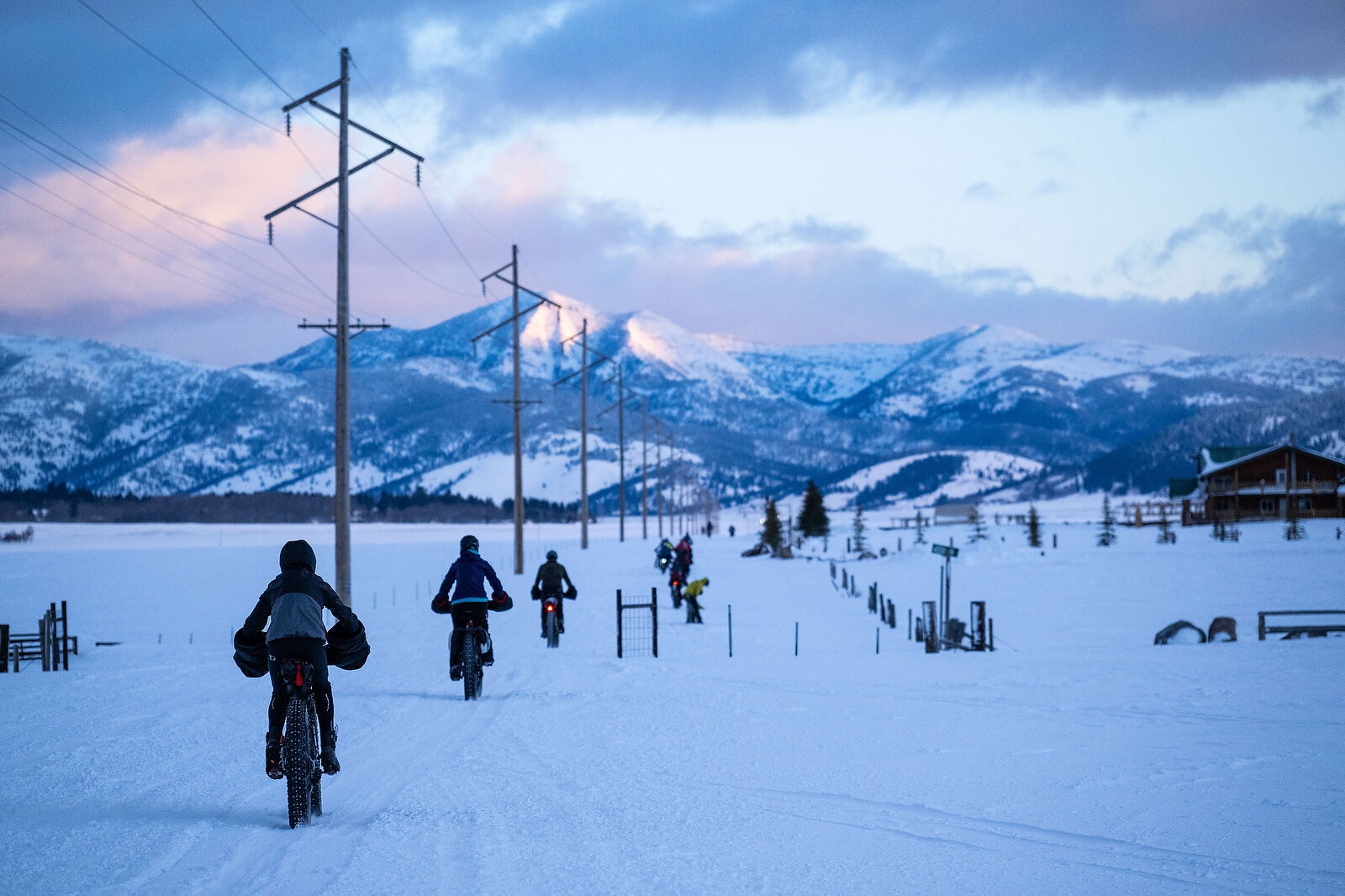
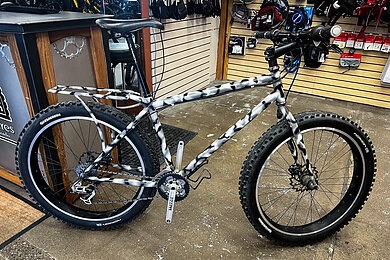
“Not everyone embraced the fat bike immediately,” says Petervary, whose inroad into the realm of fat biking involved modifying his 26-inch Jamis Dragon mountain bike to accommodate wider rims.
In 2007, Petervary raced the Iditarod Trail Invitational (ITI), a 350 and 1,000-mile human powered race following the iconic Iditarod Trail sled dog race route across Alaska. Human powered racing along the Iditarod course had been occurring since the ‘80s; the first Iditabike started in 1987, a whole 18 years before the first stock fat bikes became available to consumers. Back then some racers used DIY wheels consisting of individual rims laced or welded together on a single hub to create the wider footprint necessary for following the snow track created by sled dogs. A few renditions of custom wider rims and wider tires ultimately led to the first modern fat bike, the Surly Pugsley, which debuted in 2005. The modern fat bike found a niche in the bike industry for its ability to float over snow and sand while offering stability for heavy loads, enabling riders to travel through environments that a narrower tire bike simply couldn’t access.
Before his ITI attempt, Petervary “went on a mission build up a Pugsley,” packing it to the brim with supplies for the arctic journey. At first the bike just felt heavy. “It wasn’t until the following year that I realized the difference the fat tire made, it just took experience to realize the technique and possibilities.”
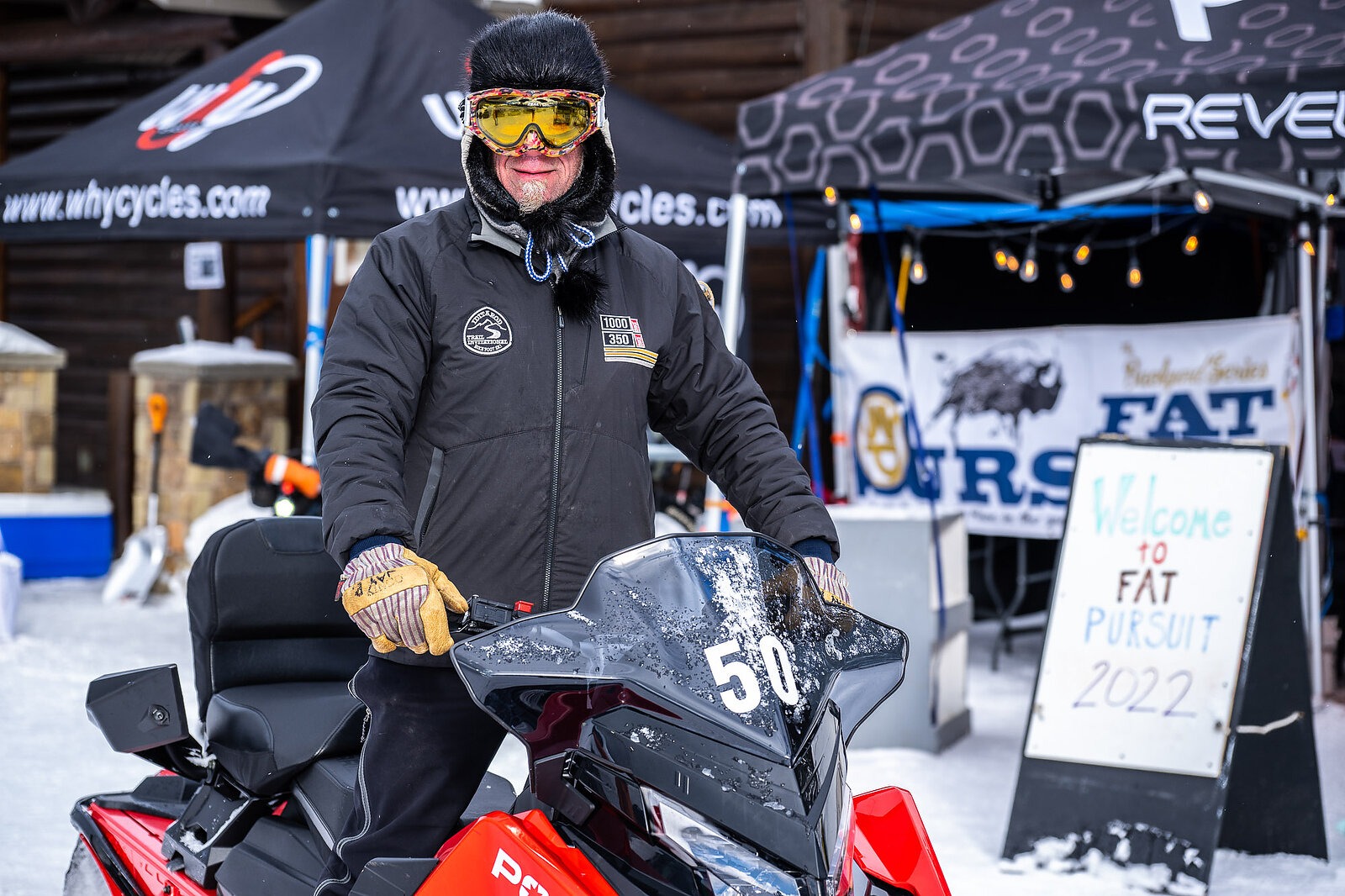
His growing commitment to racing the ITI each March led him to spending long winters at home in the Tetons in preparation for Alaska. Winter in the Tetons brings on average 150 to 175 inches of light density snow to the valleys—ideal for skiing but challenging for even the widest-tire bike. In his search for better conditions, Petervary started venturing into extensive snowmobile trail networks. The Togwotee Pass area was a bit too mountainous for winter riding. The Teton Valley had a committed ski population but lacked sufficient connectivity of low-elevation trails for the distances needed for ultra-race preparation. And he got kicked out of Yellowstone National Park’s snowmobile trails simply because bikes weren’t allowed.
In Island Park, a 90-minute drive north of the Tetons, the terrain was suitable for long rides, the topography mimicked Alaska and the weather was reliably cold and stormy, ideal training grounds for winter expeditions. But there was still one problem: the snowmobile trails were closed to wheeled vehicles in the winter, which technically included bikes.
Petervary recalls a ride beginning at Flagg Ranch in late 2006, when he first got a taste for the harsh off-limits stance enforced against fat bikers.
“I was riding for five or six hours and out of nowhere I hear a snow machine and it’s a park ranger and he pulled up next to me and asked for my driver’s license—just like I was being pulled over,” said Petervary, who was then asked to leave the trail system by the ranger. “I asked if he was serious and he said, ‘You want to take that up with the judge?’ In hindsight I should have said ‘cool, yeah I would love to see the judge’ because that would have started a conversation. Fat bike advocacy hadn’t started yet because I was the only one out there riding so there wasn’t support from other community members and I didn’t have the courage to have the conversations.”

Along with the founders and then-owners of Fitzgerald’s Cycles, Petervary started to advocate for fat bike access in the region. Quality Bike Parts, the owner of Surly and Salsa bikes, among other brands, started the Fat Bike Summit to increase awareness of fat bikes and promote the burgeoning discipline of riding. Fitzgerald’s and Petervary brought the summit to the Tetons and invited land managers. It was there, in 2012, that Petervary met Liz Davy, the U.S. Forest Service District Ranger for the Ashton/Island Park Region of Caribou-Targhee National Forest, where fat bikes were prohibited under the definition of “wheeled vehicles.”
In an effort to legitimize fat bikers as a user group, Petervary and his wife, Tracey, proposed the concept of a winter race to Davy.
“I was pretty skeptical because I had tried fat biking and imagined no one would like it,” said Davy. “I was worried about if the snowmobile community would be accepting—are you [Petervary] getting requests for an experience like this? Are people wanting this? Jay said ‘yes, they want to practice and want a race and access for fat bikes.’”
In addition to his conversations with Davy, Petervary talked to the snowmobile community, attended tourism bureau and growth and development meetings in Island Park, met with the local chamber of commerce and connected with Fremont County Parks and Recreation, the agency responsible for grooming the snowmobile trails in Island Park. He repeatedly explained what fat bikes were, showed people his bike and how it moved on the groomed trails, donated money to the grooming operations and outlined proper trail etiquette and safety.

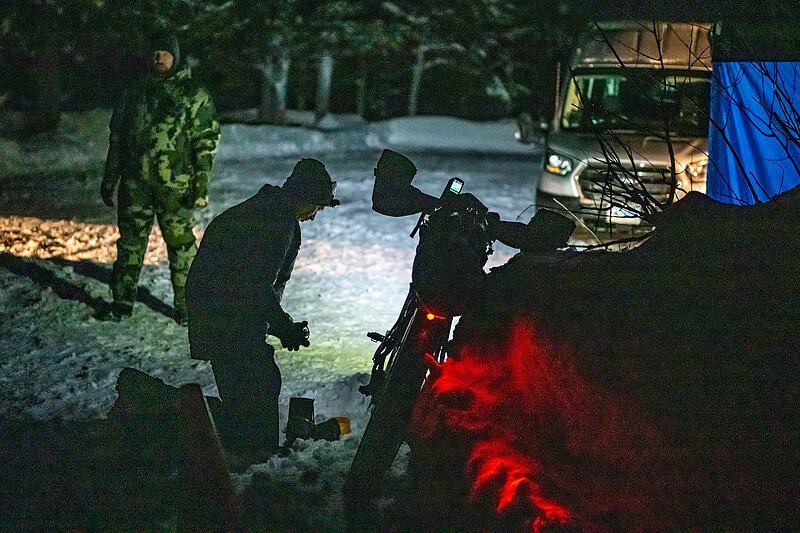
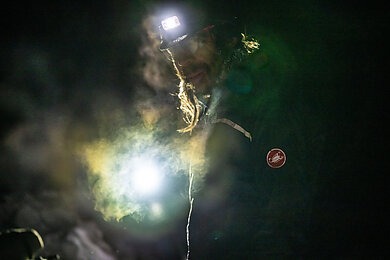
Between his efforts to build relationships with the local community and snowmobilers and his willingness to work with the Forest Service, Davy ultimately decided to support his vision and changed the language for winter travel to say “no motorized wheeled vehicles”. That simple language fix opened more than 500 miles of snowmobile trails in Island Park to fat bikes and, coupled with a special use permit, allowed Petervary to host the inaugural Fat Pursuit race in 2013.
Since then, the event has grown to host hundreds of fat bikers who come to Island Park to experience the region’s magic and take on the challenge of a winter bike expedition. A portion of registration proceeds go to local grooming operations, all while further strengthening the impression of fat bikes in the community and among other winter user groups.
My own Fat Pursuit experience began in the form of following the 2018 edition on Trackleaders from my wheelchair while recovering from a shattered pelvis. Tracking the little dots of each racer as snow fell outside my window, I imagined what the racers were experiencing out there in the cold and whether I’d be able to participate sometime in the future.
That year, Petervary’s vision for Fat Pursuit as a training ground for Alaska’s ITI bore out as Kurt Refsnider managed to win an event defined largely by heavy snowfall and difficult conditions. The experience proved critical for Refsnider who later won ITI. That story has repeated itself with riders such as Rebecca Rusch and Jacob Hora—the 2021 ITI female winner and the second youngest ITI finisher at 16 years old, both veterans and champions of Fat Pursuit.
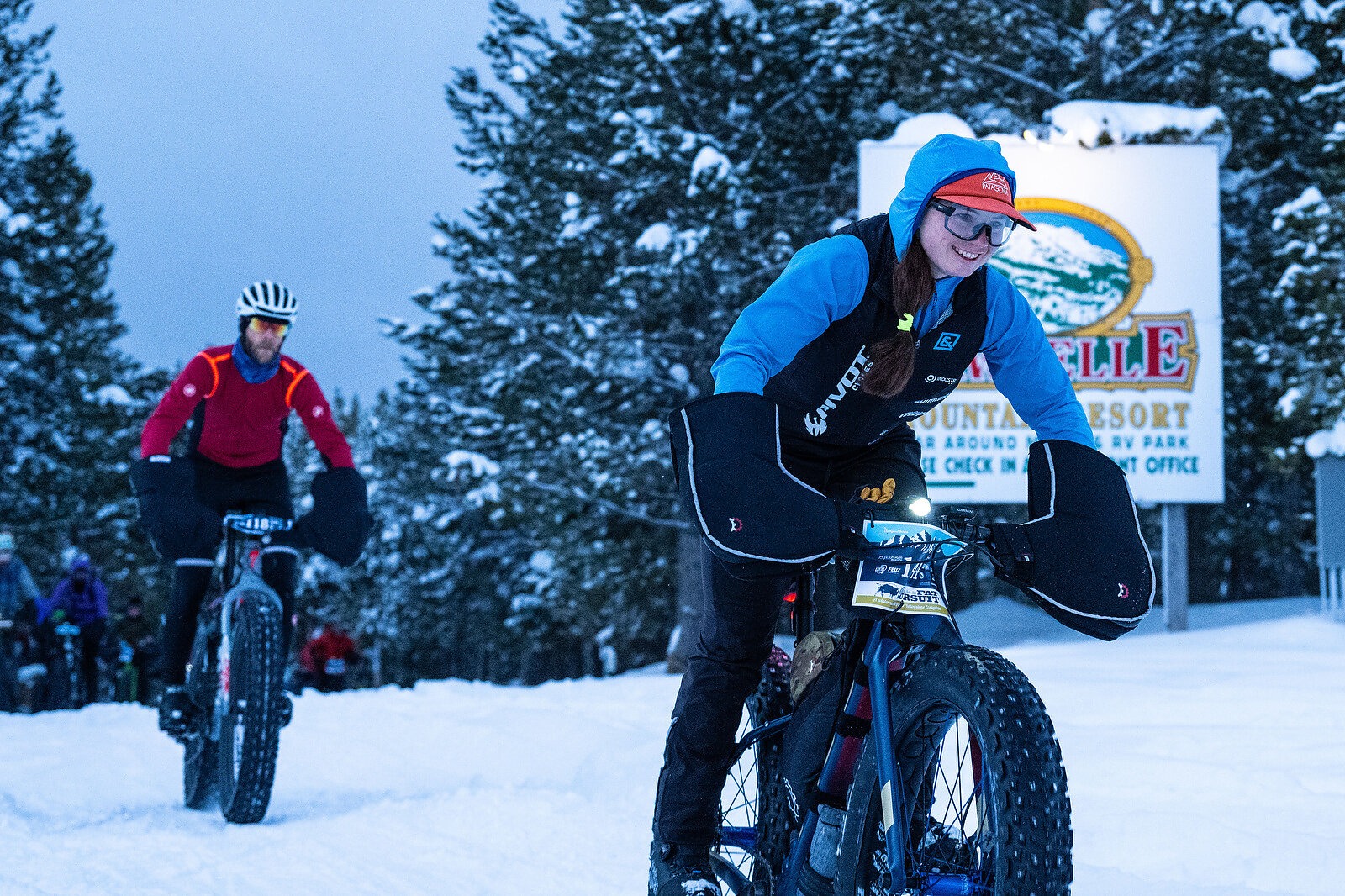
In early 2022, my curiosity finally got the best of me and I registered for Fat Pursuit, my first-ever fat bike race. The 200-kilometer distance was alluring, but I ultimately opted for the 60-kilometer option to test how the discipline suited me. A storm system produced 16 days of continuous snowfall and finally started to blow out the day before the 200k started. Temperatures began to warm, and winds caused by the changing weather pattern ripped across eastern Idaho. Highways closed, reopened and closed again as strong gusts tossed snow onto freshly plowed roads. The 200k racers set off on Friday, January 7 with warm snowfall and high winds. I followed the race online as I packed my bike. The moving speeds of racers that could be deduced from Trackleaders and the occasional video or photo from the course suggested whiteout conditions and strong winds.
“They’re moving slow,” said Mike Barklow, a volunteer groomer for the event, as I sat with him at 11 p.m. in his Island Park cabin before he left to resume working.
At 5 a.m. on Saturday morning I woke to a text update from Refsnider that read, “my SPOT died. Logan and I are alternating breaking trail. might be done by 9am… hopefully.”
A few hours later, I lined up at the 60k start under calm, cold, partly cloudy skies. The temperature had dropped 15 degrees overnight and the grooming had set up firmly. Our start gun went off, and a group of bright eyed, smiling fat bikers rolled north accompanied by a few runners and Nordic skiers. I moved around at the front of the race while managing a leaky rear tire—my first lesson in fat bike racing: air pressure matters! Low air pressure enables forward progress in soft snow, but high air pressure enables speed atop firm snow. After a couple stops to add air, my tire sorted itself out and I settled into a steady pace with a couple guys. We worked together on the firmest right-hand edge of the trail, the time flying by as we averaged 10 miles-per-hour on the fast surface. I marveled at the glistening snow on spruce and fir trees, the first sunlight I had seen in over two weeks.
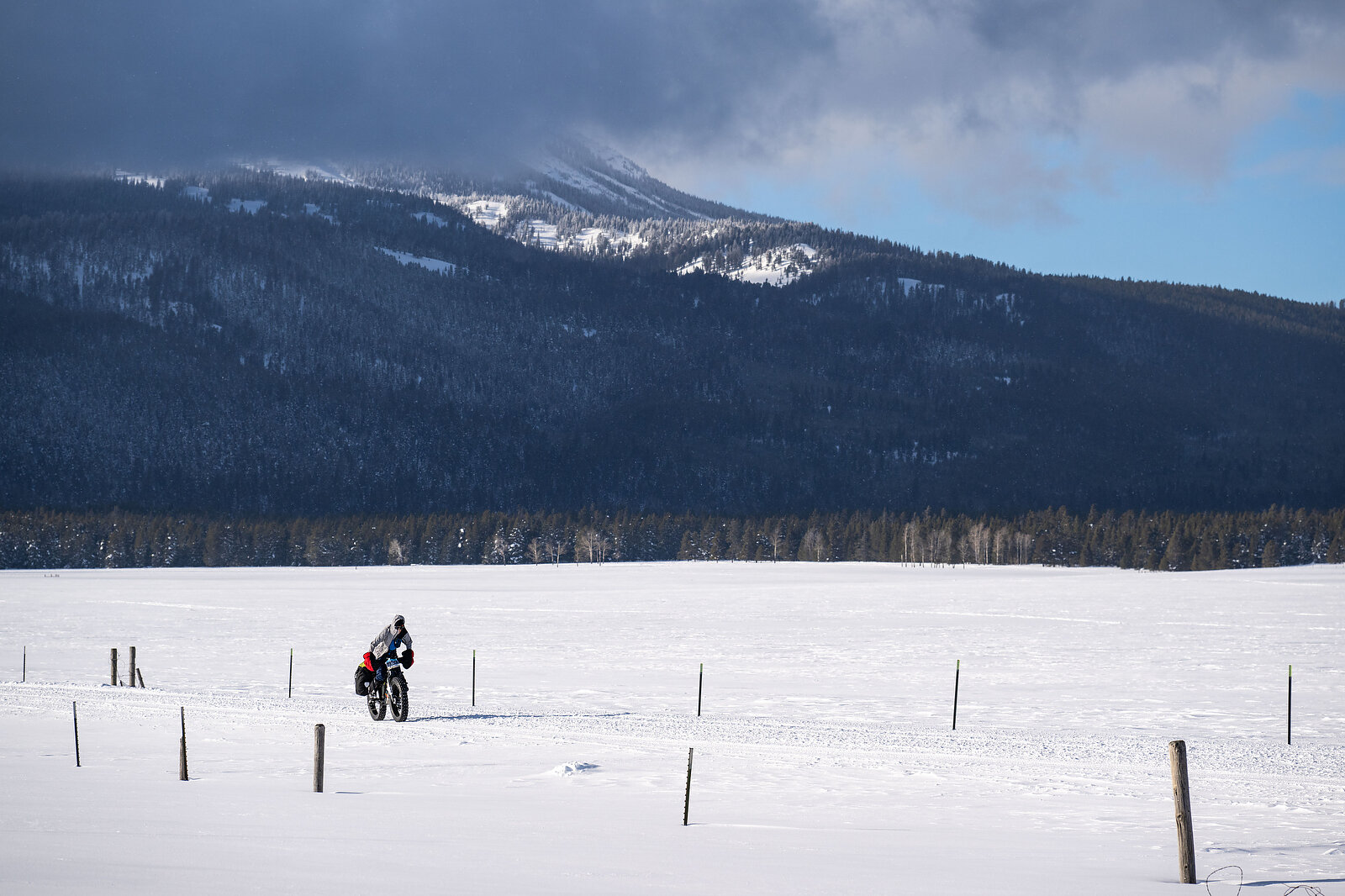
While pedaling I worked to keep the hose of my bladder from freezing from the cold temperatures, simultaneously managing my nutrition and layers on the fly. My race was proving to be short, but I knew I couldn’t compromise on water, food or body temperature. At the last aid station, I passed Rebecca Rusch, who was heading into the last 10 miles and two hours of her 200k and 29-hour race. I sprinted to the finish line with a smile that reflected the fun I had in my 3.5-hour race, and joined the three guys who finished before me in welcoming the next racers in.
Over the course of the rest of Saturday and Sunday, participants, volunteers and spectators mingled with cold beers and hot cocoa beside a propane heater at the finish line as 200k racers continued to trickle in. Racers exchanged stories of two wildly different races that shared one commonality: All had experienced the wonder of moving through a wild and beautiful winter landscape, surrounded by like-minded individuals who were out for a challenge and one-of-a-kind experience. These experiences were made possible by tireless volunteers, the vision and advocacy of the Petervarys and the collaboration of the local community and Forest Service.
I left my 60k race in January motivated to continue to dial in my fat biking to be ready for the 200k next year. As someone who once scoffed at the idea of winter ultras, the fact that I’m keen to give it a try highlights the real impact of Fat Pursuit—Jay and Tracey Petervary’s knack for attracting people to this growing segment of bicycles.
